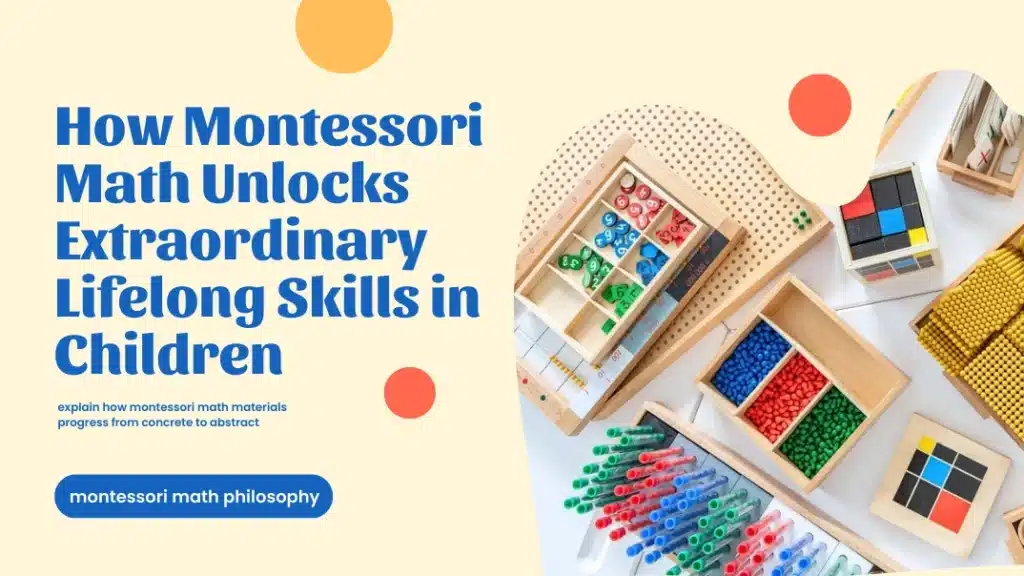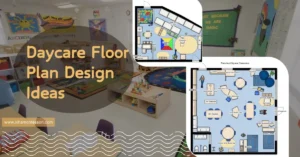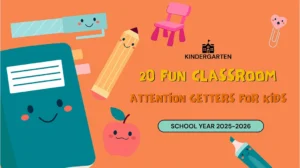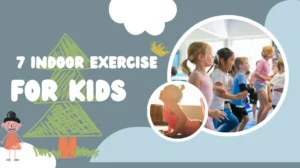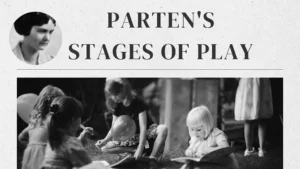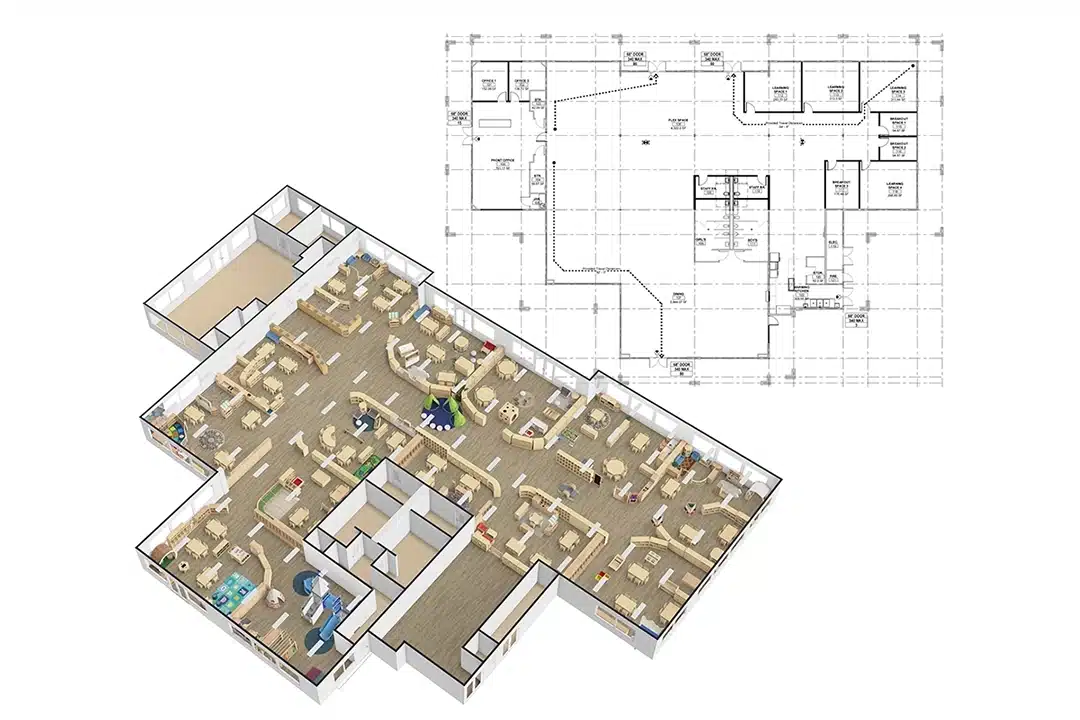Parents and educators often feel overwhelmed when teaching math in a way that truly resonates with children. Traditional methods can seem rigid and uninspiring, leaving many young learners disconnected from the beauty of mathematics. The search for a more engaging, hands-on approach leads many to discover the transformative power of Montessori Math, a system designed to spark curiosity and foster lifelong mathematical thinking.
Children solve math problems and genuinely understand multiplication and division through tangible, colorful tools like Montessori Math Beads and checkerboards. With the help of carefully designed Montessori math materials, even complex topics become approachable and exciting. This method adapts to different age groups, offering activities for preschoolers, kindergarteners, and elementary students that are both engaging and developmentally appropriate.
Whether you’re an educator looking to enhance your classroom or a parent seeking to bring Montessori math activities into your home, this guide covers everything you need. From understanding the Montessori math curriculum to exploring the best Montessori math manipulatives, you’ll find practical advice and proven methods to make math come alive for your child. Dive into the world of Montessori math and unlock a whole new way of learning!

What is Montessori Math?
Montessori Math is an innovative approach to teaching mathematics that emphasizes hands-on learning, individualized pacing, and a gradual progression from concrete to abstract concepts. Developed by Dr. Maria Montessori, this method transforms the way children perceive and interact with numbers, making math engaging, intuitive, and enjoyable.
Unlike traditional methods that often rely on rote memorization and worksheets, Montessori Math utilizes carefully designed math manipulatives like Montessori Math Beads, rods, and checkerboards. These materials allow children to physically interact with numbers and operations, providing a deeper understanding of mathematical principles. For example, golden beads help young learners visualize place value and the decimal system, while the checkerboard introduces multiplication visually and tangibly.
This system is highly adaptable, catering to children of all ages and skill levels. From preschoolers learning to count with sandpaper numbers to elementary students mastering multiplication and division, the Montessori math curriculum is designed to grow with the child. It fosters a natural progression from sensory-based activities to abstract thinking, ensuring children learn math and truly comprehend it.
At its core, Montessori Math is about more than just numbers. It teaches children critical skills like problem-solving, logical reasoning, and independence. By working with Montessori math materials, children gain confidence in their abilities and develop a genuine love for mathematics—skills that will benefit them throughout their lives.
Philosophy of Montessori Math
The Montessori approach to math is rooted in believing that every child can understand mathematical concepts when given the right environment and tools. Dr. Maria Montessori viewed math as a natural part of human cognition, emphasizing that children move through developmental stages where abstract thinking builds upon concrete experiences. Her philosophy is centered on three key principles: hands-on exploration, individualized learning, and the progression from concrete to abstract.
In Montessori math, children begin by manipulating physical materials such as golden beads, math rods, and Montessori math chains. These tools help them grasp foundational concepts like counting, addition, and subtraction, as well as advanced topics like multiplication and division. For instance, the golden bead material introduces the decimal system and places value intuitively, allowing children to “see” and “feel” the math they are learning.
Dr. Montessori believed that children should learn at their own pace, which is why the Montessori math curriculum i “d” s “gene” adapts to each child’s developmental needs. By working with Montessori math manipulatives, children gain a deeper understanding of mathematical relationships, building essential skills such as problem-solving, critical thinking, and self-discipline.
Her famous quotes, like “The hands are the instruments of man’s intelligence,” highlight the importance of tactile learning in early childhood education. This “philosophy is why Montessori math manuals are crafted” to be precise, attractive, and developmentally appropriate. Children can progress naturally without feeling overwhelmed or discouraged by introducing math concepts in a logical sequence—from simple number recognition with sandpaper numbers to complex operations on the checkerboard.


The Montessori Math Curriculum
The Montessori math curriculum is a structured yet flexible program that caters to children from preschool through elementary school, covering a wide range of concepts in a carefully sequenced manner. The curriculum is divided into distinct stages, each designed to meet the developmental needs of specific age groups:
- Preschool (Ages 2-6):
In the early years, the curriculum focuses on building a solid foundation in number sense and basic operations. Using materials like sandpaper numbers, spindle boxes, and number rods, children learn to recognize numbers, understand quantities, and perform simple addition and subtraction. For example, the Montessori math beads help children visualize quantities and the relationships between numbers. - Kindergarten (Ages 4-6):
As children gain confidence, the curriculum introduces more advanced topics like place value, skip counting, and the basics of multiplication and division. Tools such as golden beads, number boards, and Montessori math charts make these concepts accessible. This stage also incorporates practical exercises like Montessori math worksheets to reinforce learning. - Elementary (Ages 6-12):
The elementary curriculum dives into more abstract and complex concepts, including decimals, fractions, and geometry. Materials like the checkerboard, fraction circles, and algebra tiles allow children to explore these topics hands-on. The Montessori elementary math sequence ensures that children build on what they’ve learned in earlier stages, progressing naturally from concrete operations to abstract reasoning.
One of the key strengths of the curriculum is its focus on integration. Math is not taught in isolation but is connected to real-world applications and other subjects. For example, lessons on measurement and geometry are often tied to science and geography, helping children see the practical relevance of their learning.
The Montessori method of teaching math also emphasizes repetition and mastery. Children deepen their understanding and develop confidence by working repeatedly with Montessori math manipulatives. This structured yet individualized approach ensures that each child progresses at their own pace, setting the stage for lifelong success in mathematics and beyond.
Montessori Math Materials
Its innovative and thoughtfully designed materials are at the heart of the Montessori math teaching method. These materials bridge abstract mathematical concepts and a child’s natural curiosity, making math accessible, engaging, and deeply meaningful. Each tool has a specific purpose in helping children thoroughly understand mathematical principles, from Montessori math beads to checkerboards. Let’s dive into the core materials and how they are used to unlock a child’s mathematical potential.
Comprehensive List of Montessori Math Materials
| Material Name | Purpose/Function | Applicable Age Group |
|---|---|---|
| Golden Beads | Teach place value, decimal system, and basic operations like addition, subtraction, multiplication, and division. | Ages 4-9 |
| Sandpaper Numbers | Help children recognize and trace numbers, building early number-writing skills and muscle memory. | Ages 3-4 |
| Number Rods | Introduce counting, number recognition, and simple addition and subtraction through a tactile experience. | Ages 3-6 |
| Bead Chains | Teach skip counting, number sequences, multiplication, and squared/cubed numbers. | Ages 5-12 |
| Checkerboard | Simplify multi-digit multiplication and division by visually breaking down complex problems. | Ages 6-12 |
| Spindle Box | Help children associate numbers with quantities and reinforce the concept of zero. | Ages 4-6 |
| Teen Boards and Bead Sets | Teach numbers 11-19 and help children understand the concept of teen numbers and place value. | Ages 4-5 |
| Ten Boards and Beads | Introduce numbers 10-99 and reinforce place value for tens and units. | Ages 4-6 |
| Stamp Game | A transition material for learning addition, subtraction, multiplication, and division in abstract form. | Ages 6-9 |
| Dot Game | Visualize addition and build a deeper understanding of numbers’ relationships. | Ages 5-7 |
| Fraction Circles | Teach the basics of fractions, equivalence, and operations like addition/subtraction of fractions. | Ages 6-12 |
| Decimal Boards and Beads | Introduce decimals, including place value and operations like multiplication and division with decimals. | Ages 7-12 |
| Geometry Cabinet | Explore geometric shapes, their properties, and their relationships to mathematical concepts like fractions. | Ages 5-12 |
| Multiplication Board | Practice multiplication tables in a tactile and visual way. | Ages 5-9 |
| Division Board | Help children understand and practice division concepts using bead markers. | Ages 5-9 |
| Binomial and Trinomial Cubes | Build a foundation for algebra by exploring patterns and the expansion of binomial and trinomial formulas. | Ages 5-12 |
| Large Bead Frame | Teach more complex operations like multi-digit multiplication and subtraction in a hands-on manner. | Ages 6-12 |
| Small Bead Frame | Introduce addition and subtraction for younger children. | Ages 5-7 |
| Hundred Board | Reinforce counting from 1-100 and practice number patterns. | Ages 4-6 |
| Thousand Chain | Teach counting and skip counting up to 1,000, reinforcing place value and number relationships. | Ages 6-12 |
| Math Fact Charts | Help children memorize basic math facts for addition, subtraction, multiplication, and division. | Ages 5-9 |
| Square Chains and Cubes | Explore squared and cubed numbers, laying the groundwork for geometric understanding. | Ages 6-12 |
| Negative Snake Game | Teach subtraction and the concept of negative numbers in a hands-on and playful way. | Ages 6-9 |
Golden Beads: Building Blocks for Place Value and Operations
The golden bead material is one of the most iconic tools in Montessori math, introducing children to the decimal system, place value, and basic operations like addition, subtraction, multiplication, and division.
- How it works:
- Golden beads represent units, tens, hundreds, and thousands, allowing children to explore quantities and relationships between numbers physically.
- For instance, a child can combine beads from two quantities in an addition activity, visualizing the process and outcome.
- Why it’s effective:
- Children see and feel the difference between one unit and one thousand, making abstract ideas like base-10 much clearer.
- It provides a tactile experience, helping children master concepts that would otherwise be difficult with traditional teaching.
Montessori Math Beads: Visualizing Sequences and Patterns
The Montessori math beads, including the bead chains, are indispensable for teaching number sequencing, skip counting, and multiplication.
- How they’re used:
- Short and long bead chains help children practice counting by 1s, 2s, 3s, and beyond, laying the groundwork for multiplication.
- Bead squares and cubes extend this understanding to concepts like squared numbers and the cube root.
- At home and in classrooms:
- Parents can easily incorporate DIY Montessori math beads into their teaching routine, creating affordable tools that mirror the classroom experience.
Checkerboard: Demystifying Multiplication and Division
The checkerboard math material transforms complex multiplication and division problems into manageable, hands-on exercises.
- How it’s used:
- The checkerboard is a grid of colored squares representing different place values. Children use bead bars to perform operations like multi-digit multiplication step by step.
- Children distribute bead bars across the board for division, visually breaking down large numbers.
- Impact on learning:
- It bridges the gap between concrete and abstract, helping children confidently grasp advanced operations.



Sandpaper Numbers and Number Rods: Early Foundations
For younger children, tools like sandpaper numbers and number rods are critical in teaching number recognition, sequencing, and basic operations.
- Sandpaper Numbers:
- These tactile cards allow children to trace the shapes of numbers with their fingers, building muscle memory and enhancing recognition.
- Number Rods:
- These rods visually represent numbers 1 through 10, making it easy for children to compare quantities and understand simple addition or subtraction.
Montessori Math Charts and Boards
Charts and boards are vital in expanding children’s understanding of multiplication tables, fractions, and even algebra.
- Multiplication Charts:
- Tools like the Montessori math stamp game and multiplication boards teach children to solve problems systematically while reinforcing memorization.
- Fraction Circles:
- These help children grasp the relationships between fractions, laying the groundwork for more advanced math concepts.


DIY Montessori Math Materials for Home Use
Many parents opt for DIY Montessori math materials to bring the classroom experience home. Tools like handmade bead chains, homemade number cards, or wooden rods can be created affordably while maintaining their educational value.
- Benefits of DIY materials:
- They are cost-effective and customizable.
- They allow parents to participate in their child’s learning actively.
Best Montessori Math Tools for Effective Learning
For those looking to purchase high-quality Montessori math supplies, several options stand out:
- Golden Bead Sets: Ideal for teaching place value and operations.
- Checkerboards and Bead Frames: Advanced tools for older children mastering multiplication and division.
- Sandpaper Numbers and Spindle Boxes: Essential for early math learners to understand numbers and quantities.
- Fraction Circles and Decimal Boards: For teaching fractions, decimals, and percentages in elementary grades.
- Montessori Math Kits: Comprehensive sets with various materials for learning concepts across all age groups.
Why Montessori Math Materials Work
What makes these materials so effective is their ability to simultaneously engage children’s hands and minds. Children are not merely memorizing equations but actively exploring and discovering math principles independently. By using Montessori math manipulatives, they can build confidence, improve problem-solving skills, and develop a lasting love for math.
Educators and parents can provide children with a deeper, more meaningful understanding of mathematics by integrating these materials into lessons at home and in the classroom. Whether it’s golden beads, checkerboards, or fraction circles, Montessori materials are tools of transformation that make math an adventure rather than a chore.
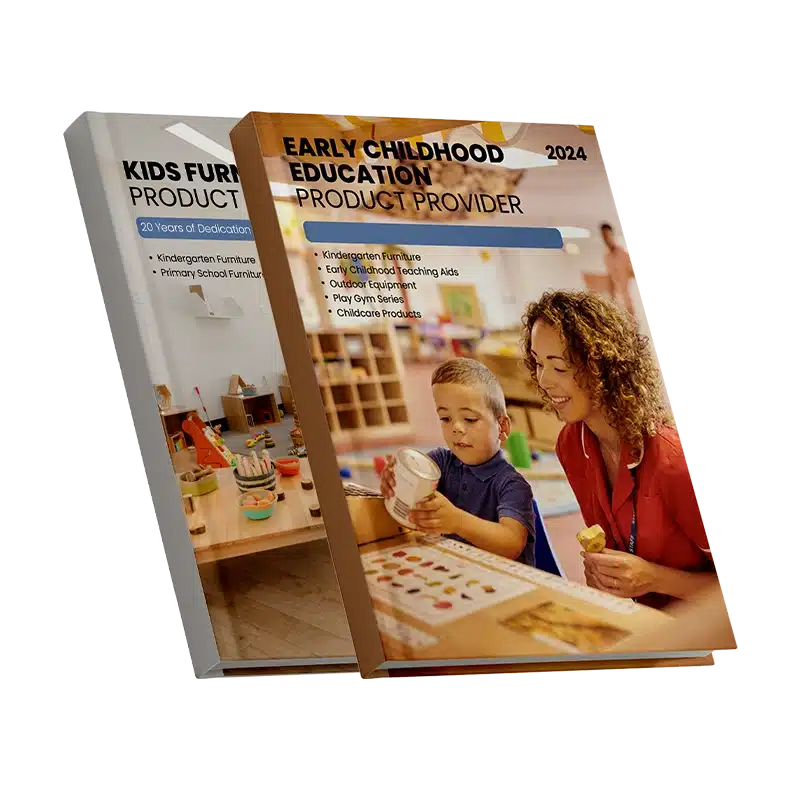
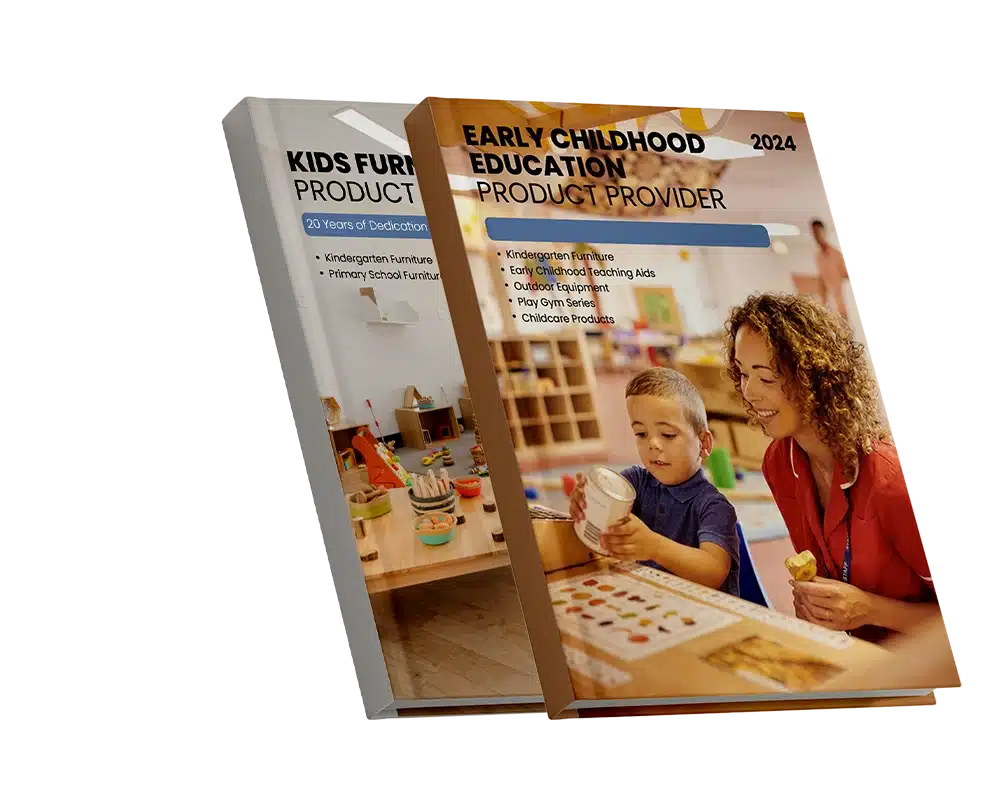
Montessori Math for Different Age Groups
Preschool (Ages 2-6): Sensory Exploration and Early Foundations
For preschool-aged children, math learning is all about tactile experiences and sensory exploration. At this stage, children are introduced to the Montessori math materials that help them build a connection between numbers and their quantities. The focus is on creating a strong foundation for number sense, including counting, recognizing symbols, and understanding basic quantities.
Children at this age thrive on repetitive, hands-on activities that allow them to build confidence and independence. Concepts like addition and subtraction are introduced gradually through exploration, without the pressure of abstract learning.
Kindergarten (Ages 4-6): Transitioning to Structured Learning
By the kindergarten years, children begin transitioning from purely tactile learning to more structured and semi-abstract concepts. They start to explore the decimal system, place value, and the basics of multiplication and division.
The introduction of larger numbers, patterns, and relationships characterizes this stage. Visual aids like ten boards, golden beads, and bead chains become tools for exploring number relationships and operations. The focus shifts towards problem-solving and reinforcing early concepts through repetitive practice and real-world applications.
Elementary (Ages 6-12): Abstract Thinking and Complex Operations
In the elementary years, children are ready to delve into more abstract and advanced math concepts. This stage introduces topics like fractions, decimals, geometry, and algebraic reasoning.
Children work with materials like the checkerboard, fraction circles, and binomial cubes to understand complex operations and visualize abstract ideas. The emphasis is placed on real-world applications, encouraging critical thinking and independence. By now, children perform calculations and develop the ability to analyze and solve problems conceptually.
| Age Group | Key Focus | Primary Materials | Learning Goals |
|---|---|---|---|
| Preschool (2-6) | – Number recognition and counting. | Sandpaper Numbers, Number Rods, Spindle Box. | Develop early number sense and associate numbers with quantities. |
| – Basic addition and subtraction with hands-on exploration. | Golden Beads, Bead Chains. | Build confidence and independence in early math concepts. | |
| Kindergarten (4-6) | – Place value and decimal system. | Ten Boards, Golden Beads, Bead Chains. | Transition to semi-abstract thinking with structured math activities. |
| – Basic multiplication and division, recognizing patterns. | Hundred Board, Fraction Circles. | Reinforce problem-solving skills and logical reasoning. | |
| Elementary (6-12) | – Complex operations: multi-digit multiplication, long division. | Checkerboard, Large Bead Frame, Decimal Boards. | Master abstract concepts and apply math to real-world scenarios. |
| – Fractions, decimals, geometry, and early algebra. | Fraction Circles, Binomial Cubes, Geometry Cabinet. | Foster critical thinking and advanced problem-solving abilities. |
The Montessori math curriculum adapts to each child’s developmental stage, ensuring a seamless transition from tactile exploration to abstract reasoning. Children gain a deep, intuitive understanding of math by using age-appropriate Montessori math materials, preparing them for both academic success and real-world challenges.



How Montessori Teaches Math
From Concrete to Abstract
The Montessori method of teaching math is built on the principle of guiding children from hands-on, tactile experiences to abstract reasoning. Dr. Maria Montessori emphasized that children learn best when they first interact with physical objects, which allow them to internalize mathematical concepts before transitioning to abstract problem-solving.
Concrete Learning with Montessori Math Materials
At the core of Montessori math is the use of specialized Montessori math manipulatives, such as golden beads, checkerboards, and fraction circles. These tools provide children with a sensory-rich learning experience, allowing them to “see” and “feel” math in action. For example:
- Golden Beads: Teach place value and the decimal system by letting children physically combine and separate units, tens, hundreds, and thousands.
- Sandpaper Numbers: Help children recognize and trace numbers, building a tactile connection to numerical symbols.
- Bead Chains: Allow children to explore number sequencing, multiplication, and powers of numbers through repetitive, hands-on activities.
Progression to Semi-Abstract Thinking
Once children develop confidence with concrete tools, the next step is to guide them toward semi-abstract thinking. Materials like the stamp game, number boards, and dot game serve as bridges, helping children apply what they’ve learned using symbols and written numbers while still engaging with physical aids.
- For example, the stamp game visually represents addition, subtraction, multiplication, and division, making it easier for children to grasp these operations without relying solely on abstract methods.
Abstract Thinking and Independence
In the final stage, children move toward solving problems mentally or using abstract symbols. By this point, they have internalized mathematical principles through years of concrete practice. Tools like the checkerboard or binomial cubes further enhance their understanding of advanced topics like algebra and geometry.
The transition from concrete to abstract in Montessori math ensures that children memorize facts and deeply understand mathematical concepts, fostering independence and critical thinking.
Key Montessori Math Activities
Montessori math is brought to life through various hands-on activities that engage children at different developmental stages. These activities use Montessori math materials to teach essential operations like addition, subtraction, multiplication, and division, as well as advanced concepts such as fractions and geometry.
Activities for Preschoolers and Elementary Students
Addition and Subtraction:
- Golden Beads: Preschoolers use golden beads to perform simple addition and subtraction by physically combining or separating beads.
- Number Rods: Help children visualize addition and subtraction by comparing rod lengths.
Multiplication and Division:
- Bead Chains: Allow children to practice multiplication through skip counting. For instance, the 5-bead chain shows the 5, 10, 15, and so on sequence.
- Checkerboard: Elementary students use this tool to simplify multi-digit multiplication, visualizing place value and the process of carrying over.
Fractions and Decimals:
- Fraction Circles: Teach children about equivalence and operations with fractions (e.g., adding 1/2 and 1/4).
- Decimal Boards: Introduce decimal numbers and operations like addition and subtraction of decimals.
Advanced Concepts in Montessori Math
As children progress, Montessori math activities introduce more complex ideas, helping them build confidence with abstract math.
- Checkerboard Math: Breaks down large multiplication problems into smaller, manageable steps, visually representing each operation.
- Geometry Cabinet: Explores the relationship between shapes, angles, and mathematical properties.
- Binomial and Trinomial Cubes: Teach patterns and algebraic expansion visually and intuitively.
Group and Real-Life Activities
Montessori math extends beyond materials, incorporating group exercises and practical life scenarios:
- Group Bead Activities: Encourage collaboration by solving math problems using bead materials.
- Real-Life Math: Use everyday tasks like measuring ingredients in cooking or dividing snacks to reinforce math skills.

Montessori Math in Action
The practical implementation of Montessori math shows how effective this method is in fostering mathematical understanding and critical thinking. Using tools like Montessori math beads, checkerboards, and fraction circles, children solve math problems and develop a deep comprehension of the underlying concepts.
Case Study 1: Building Mathematical Confidence with Golden Beads
In one preschool classroom, a 4-year-old struggled with understanding essential addition through traditional worksheets. However, when introduced to golden beads—a key part of the Montessori math materials—everything changed.
- The child physically combined units, tens, and hundreds, gradually solving simple addition problems.
- Within weeks, the child could independently perform addition with numbers up to 1,000.
- This hands-on approach empowered the child to visualize the decimal system and build confidence.
Case Study 2: Checkerboard Math for Multiplication
In an elementary setting, an 8-year-old student found multi-digit multiplication daunting. Using the Montessori checkerboard, the student broke the operation into manageable steps:
- Bead bars are placed on the colored squares, representing units, tens, and hundreds.
- Gradually working through the multiplication process while understanding the concept of place value.
- Using the checkerboard math tool, the child transitioned from relying on visual aids to confidently solving abstract problems.
Real-Life Montessori Applications at Home
Parents can also bring Montessori math activities into their homes.
- Using DIY Montessori math materials, such as homemade bead chains or printed Montessori math worksheets, parents can teach number sequencing, skip counting, and early arithmetic.
- Everyday tasks like measuring ingredients during cooking or dividing snacks help children connect math to real-world scenarios.
These examples highlight how Montessori math materials like golden beads and the checkerboard transform learning into an interactive, enjoyable process. They show that children learn to calculate and develop logical reasoning and independence.


The Impact of Montessori Math on Brain Development
Cognitive Benefits of Hands-On Math
Research shows that the Montessori method of teaching math profoundly impacts cognitive development, particularly in areas like problem-solving, logical thinking, and memory retention. Children develop critical brain functions that support lifelong learning by integrating tactile exploration with structured learning.
How Montessori Math Supports Problem-Solving Skills
Using Montessori math manipulatives, such as bead chains, stamp games, and fraction circles, encourages children to approach problems methodically. For example:
- When solving division problems with the division board, children distribute bead markers across slots, visualizing the division process step by step.
- This tactile engagement enhances neural connections related to analytical thinking and spatial awareness.
Logical Thinking and Abstract Reasoning
As children progress through the Montessori math curriculum, they move from concrete learning (e.g., using golden beads to represent place value) to abstract reasoning (e.g., solving equations mentally).
- Tools like the binomial cube introduce algebraic patterns, laying the groundwork for future math learning.
- Research suggests that this gradual transition strengthens the prefrontal cortex, the part of the brain responsible for decision-making and reasoning.
Long-Term Cognitive Benefits
Studies on Montessori math materials show that early tactile learning improves children’s memory retention and information processing.
- Activities like working with geometry cabinets teach shapes and their properties and improve fine motor skills and spatial intelligence.
- Children develop an intuitive understanding of mathematical relationships by mastering advanced concepts like fractions and decimals with tools such as fraction circles and decimal boards.
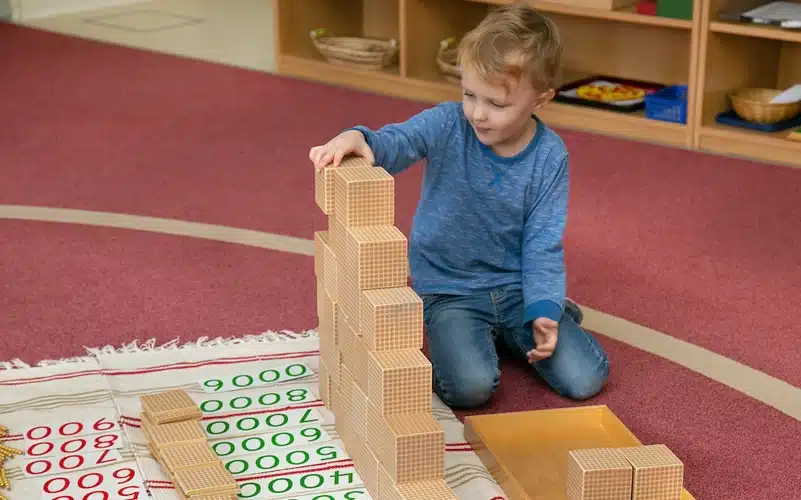

Conclusion
The long-term impact of Montessori math extends far beyond mastering numbers and operations. By engaging children with hands-on tools like golden beads, checkerboards, and fraction circles, this method fosters a genuine love for learning and builds critical thinking skills that last a lifetime.
Through its carefully structured approach—progressing from concrete to abstract, tailored for different age groups, and emphasizing independence—Montessori math equips children with mathematical proficiency, problem-solving abilities, logical reasoning, and self-confidence. These skills are foundational for academic success and real-world applications.
As parents and educators, embracing the principles of Montessori math means giving children the tools to understand and appreciate the world around them. By investing in this method, we prepare young minds to face challenges with creativity, resilience, and a passion for discovery—qualities that will profoundly shape their futures.
Montessori math is more than a teaching method; it’s a legacy of empowering children to think, explore, and thrive.

